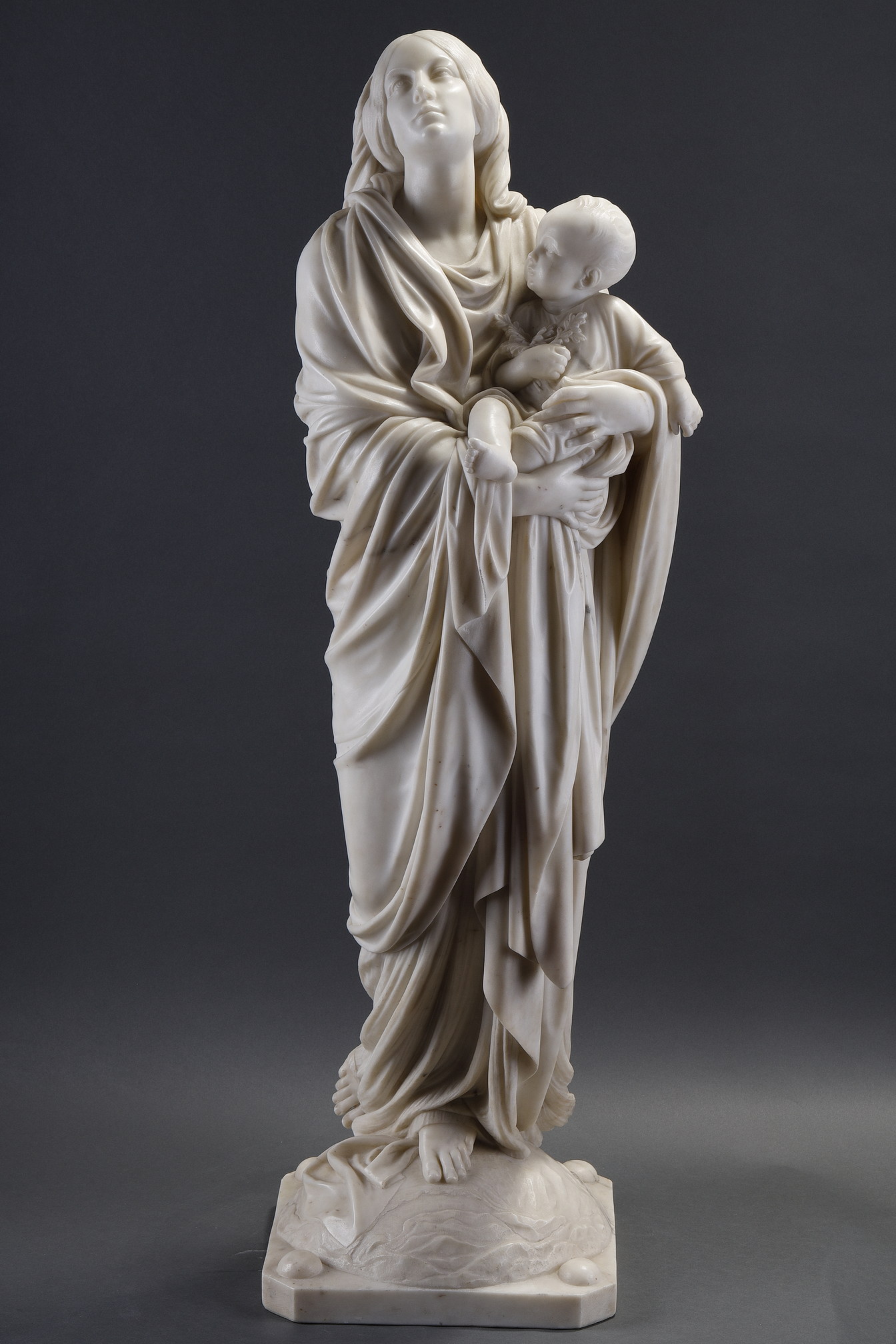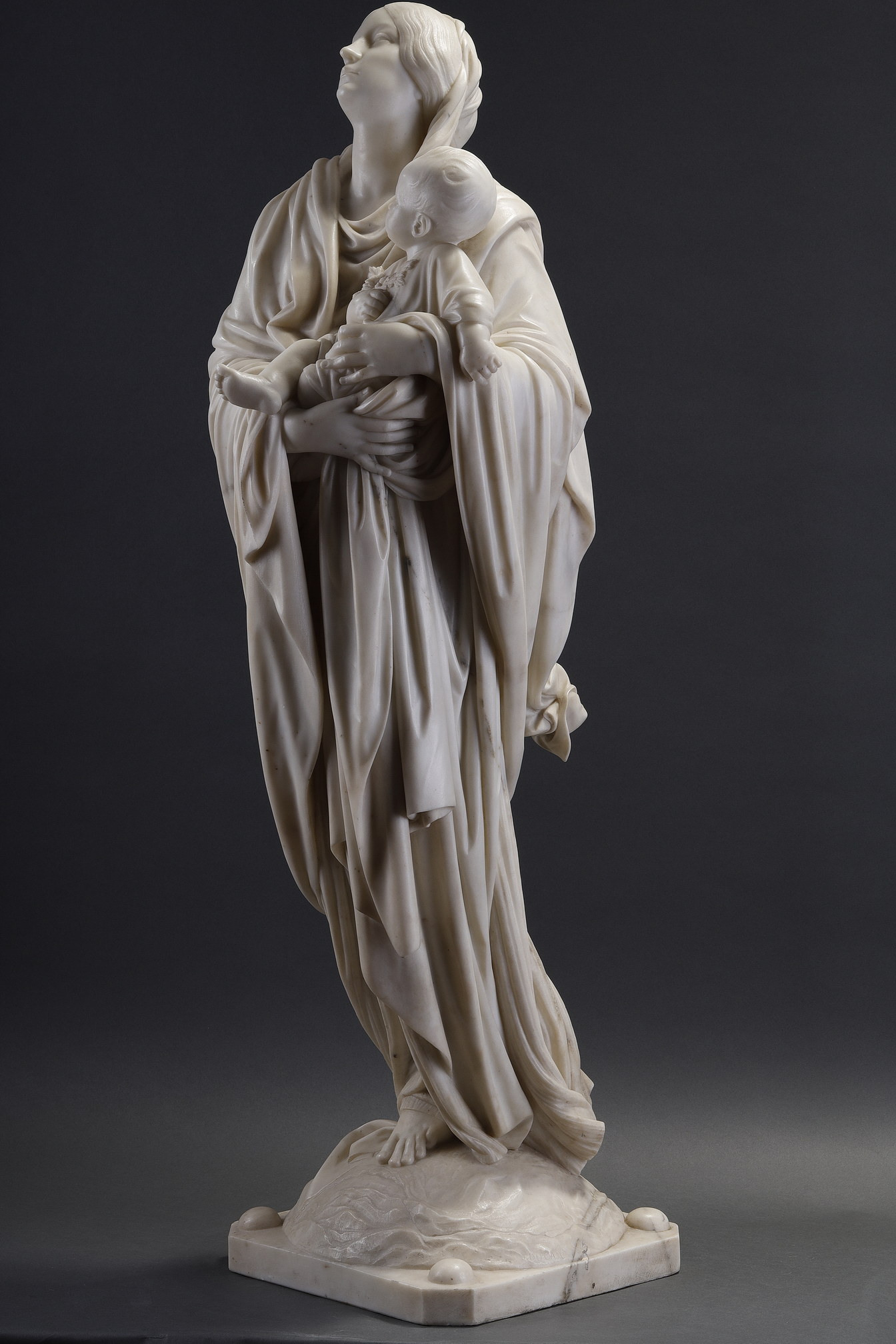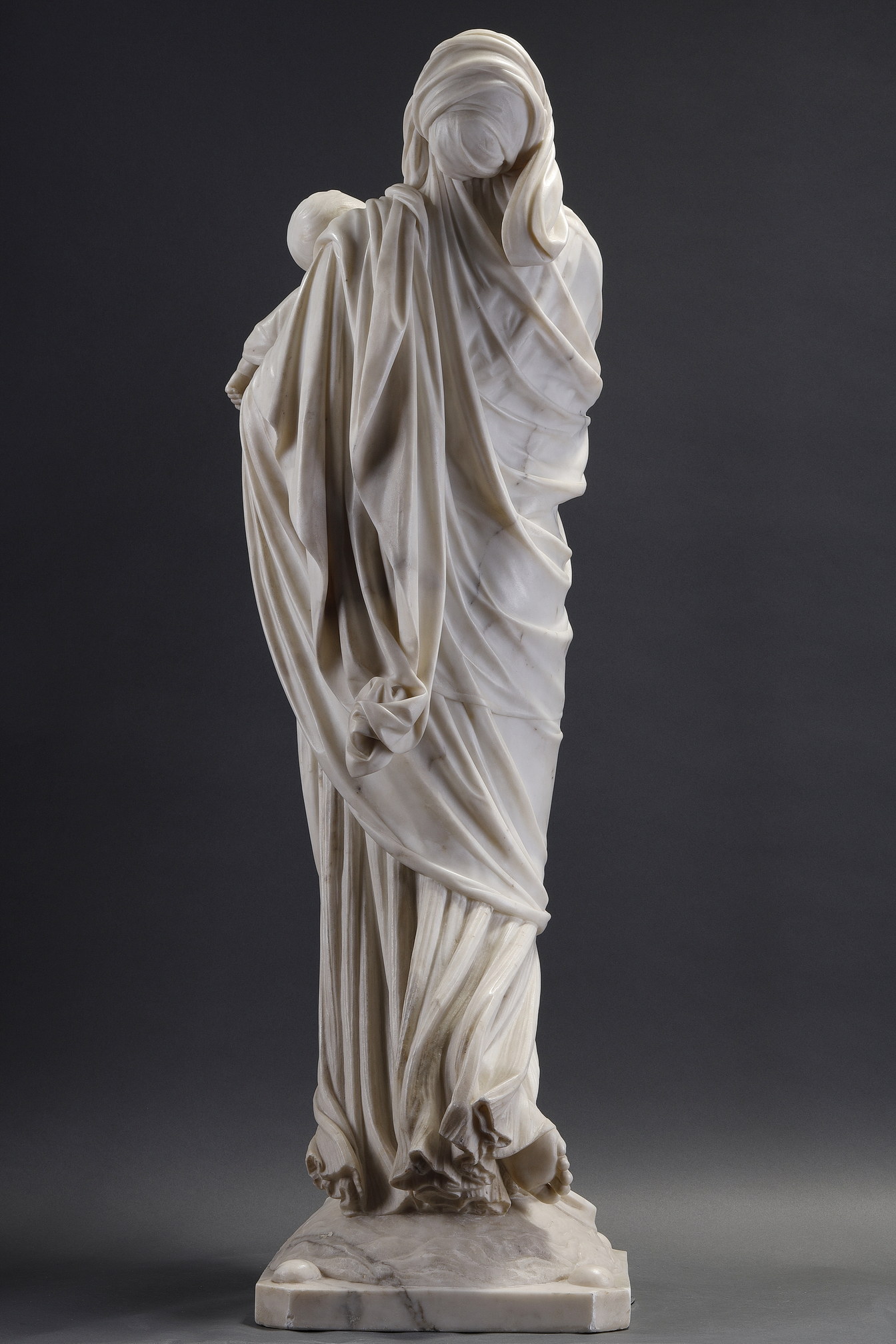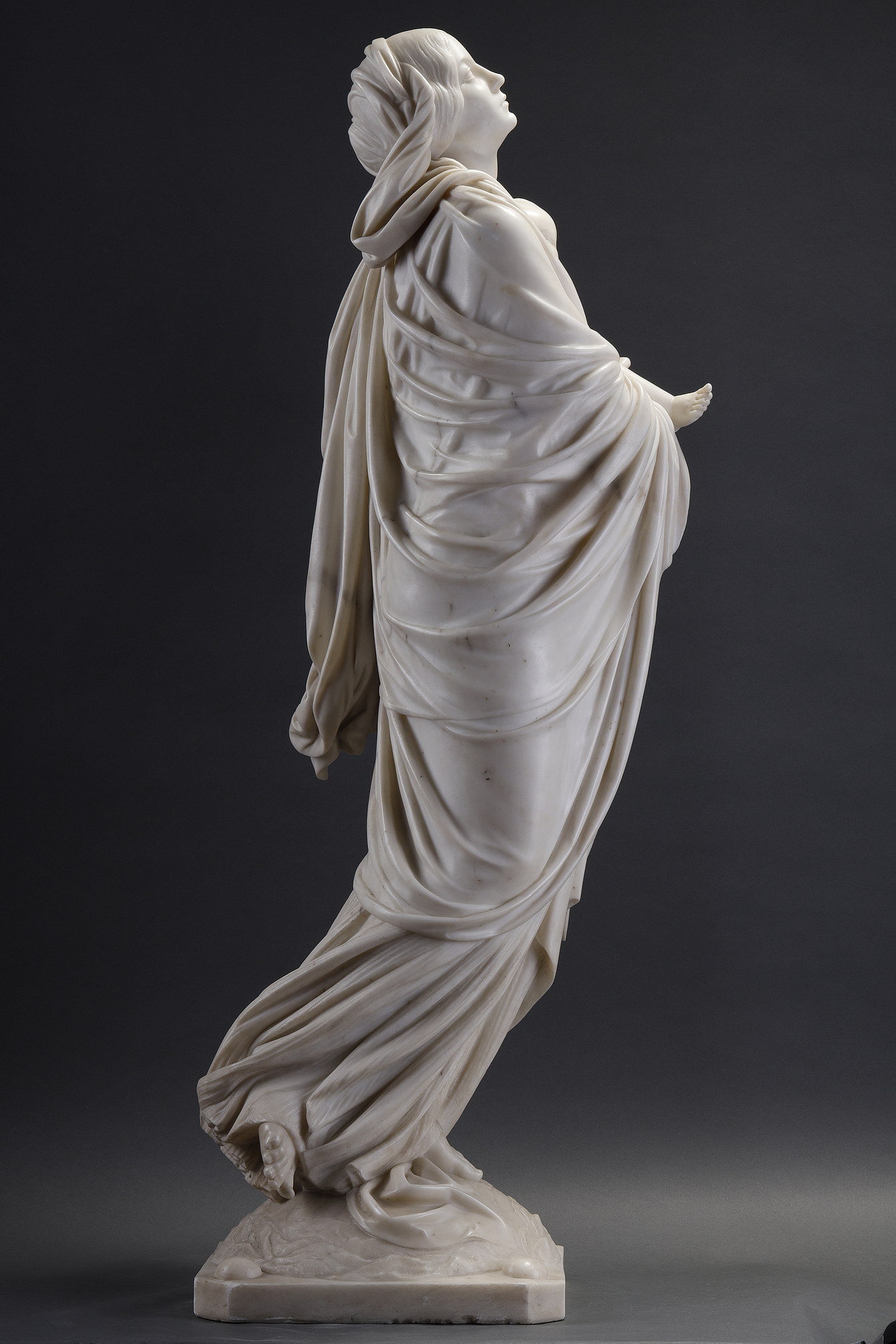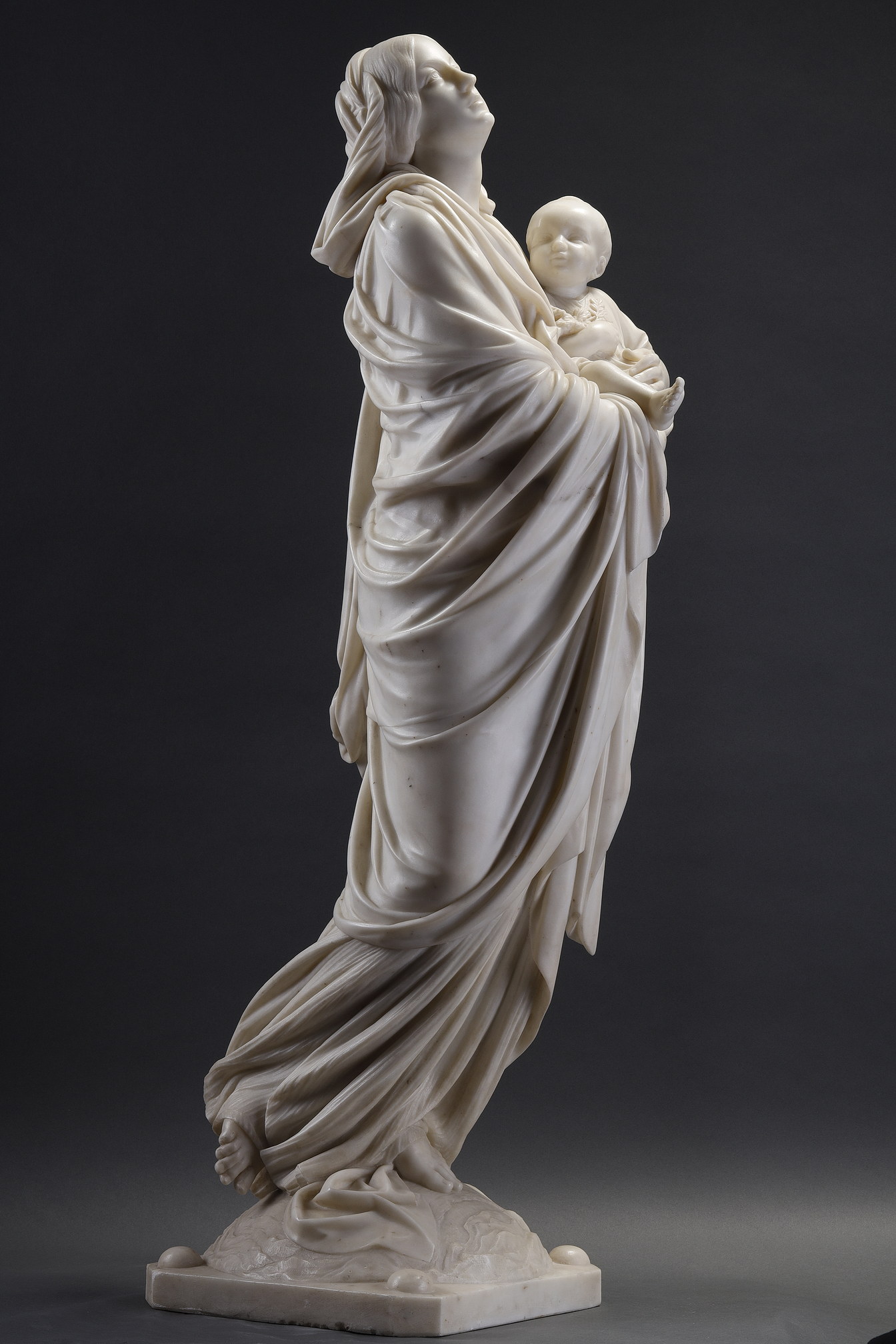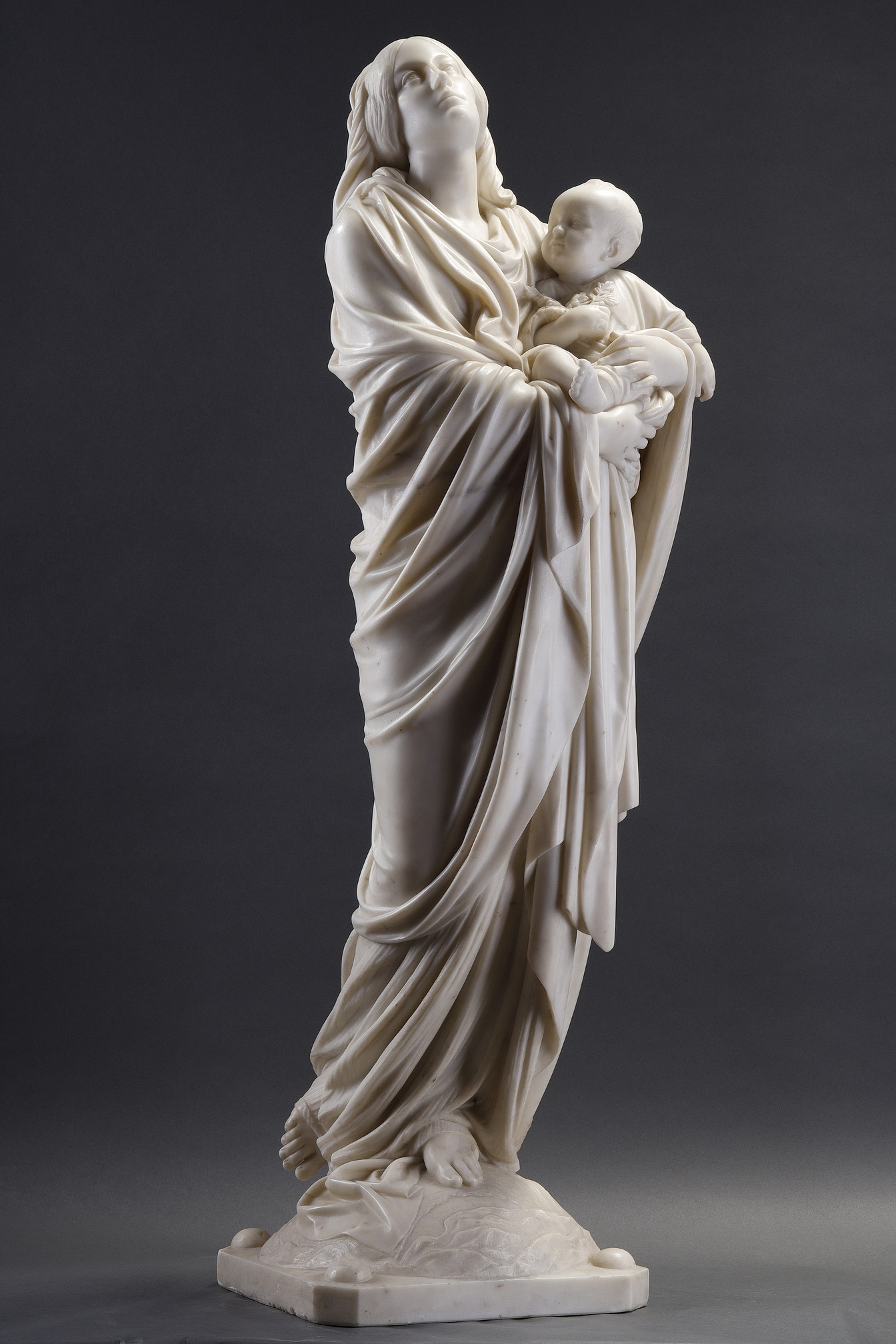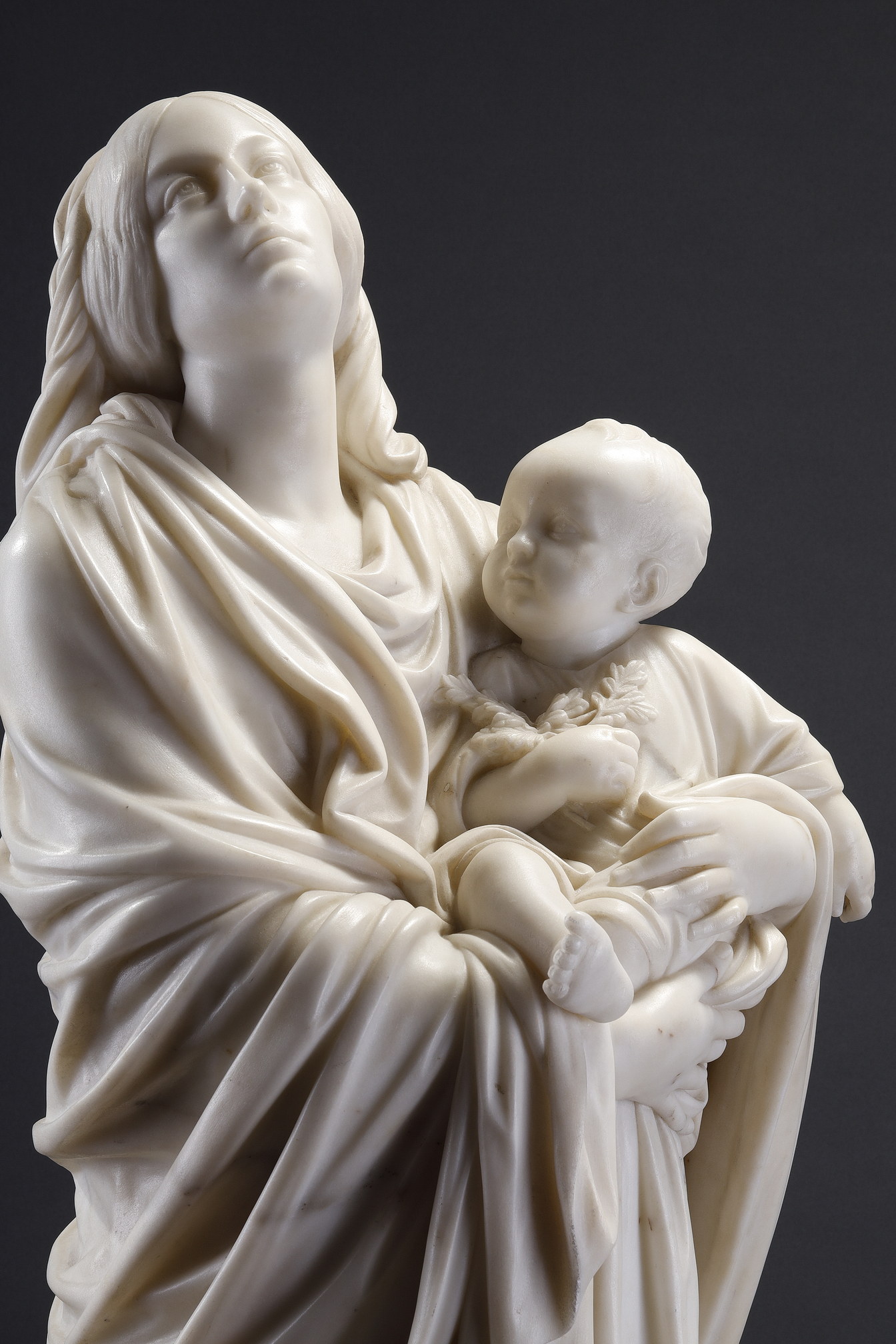A MOTHER ASCENDING
TO HEAVEN
JOSEPH DUCAJU (1823-1891)
Belgian
Date : 1858
Dimensions : 130 cm (Height)
Material : White Carrara marble
Signature : “J. DUCAJU”
Provenance : Château Mouton, Aywaille, Belgium (1950-2020)
Historical and artistic context
First exhibited at the 1878 Universal Exhibition in Paris, A Mother Ascending to Heaven is a striking white Carrara marble sculpture by Joseph Ducaju, one of Belgium’s foremost 19th-century sculptors. Known for his grand public monuments and royal commissions, Ducaju here reveals a more intimate and profoundly spiritual facet of his artistry.
The work depicts a serene mother, her eyes lifted toward the heavens, cradling her child tenderly against her chest. Her bare feet gently rest on a naturalistic base, while her diaphanous drapery appears to float—evoking both earthly weight and ethereal transcendence. The iconography subtly recalls the Assumption of the Virgin Mary, drawing a poignant parallel between maternal love and divine elevation. In this way, the sculpture becomes both a celebration of maternal devotion and a metaphor for the sacred passage from life to eternity.
The exceptional quality of the marble and the impressive scale of the composition amplify its monumental impact. Highly praised in contemporary art circles, the work was later showcased at the Antwerp Salon in 1882, affirming its critical acclaim and cultural importance.
With an artful blend of technical precision, symbolism, and spiritual resonance, Ducaju invites viewers into a moment of quiet contemplation—where rising upward is not merely a physical act, but a luminous expression of the enduring bond between mother and child, between earth and heaven.
Literature
- ENGELEN, C., & MARX, M. (2006). Sculpture in Belgium from 1830. Volume III. Louvain: Engelen – Marx. pp. 1357-1359.
- VERON, T. (1878). Paris Salon in 1878 and Universal Exhibition. Véron Dictionary. p. 309.
- General Commissariat. (1878). Catalog of the Universal Exhibition of Paris 1878 (3rd ed.). Paris: National Printing Office. p. 317.
- DE PESQUIDOUX, D. (1881). Art in Both Worlds. Paris: E. Plon & Co. p. 368.

